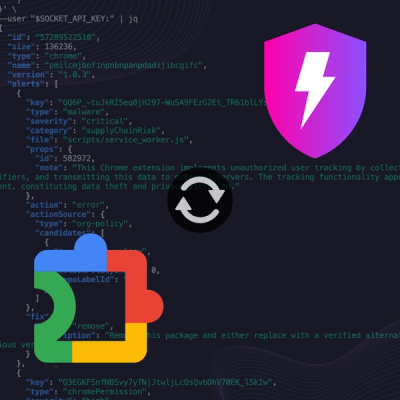
Product
Socket Now Protects the Chrome Extension Ecosystem
Socket is launching experimental protection for Chrome extensions, scanning for malware and risky permissions to prevent silent supply chain attacks.
Python interface to wigle APIs. This project is unofficial and may stop working due to API changes at any point without warning.
Currently supported operations: authentication, search and user information
Search supports all the options available via web interface. For example to search for APs advertising network "foobar", use:
wigle = Wigle('username', 'password')
wigle.search(ssid="foobar")
Paging happens behind the scenes and will pull all results in multiple requests
when necessary (when max_results is set to value higher than 100).
See docstrings for more details.
Search and user info are exposed as CLI tools wigle_user_info and
wigle_search.
FAQs
Interface to wigle website
We found that wigle demonstrated a healthy version release cadence and project activity because the last version was released less than a year ago. It has 1 open source maintainer collaborating on the project.
Did you know?

Socket for GitHub automatically highlights issues in each pull request and monitors the health of all your open source dependencies. Discover the contents of your packages and block harmful activity before you install or update your dependencies.

Product
Socket is launching experimental protection for Chrome extensions, scanning for malware and risky permissions to prevent silent supply chain attacks.

Product
Add secure dependency scanning to Claude Desktop with Socket MCP, a one-click extension that keeps your coding conversations safe from malicious packages.

Product
Socket now supports Scala and Kotlin, bringing AI-powered threat detection to JVM projects with easy manifest generation and fast, accurate scans.